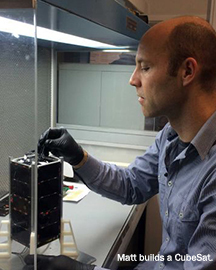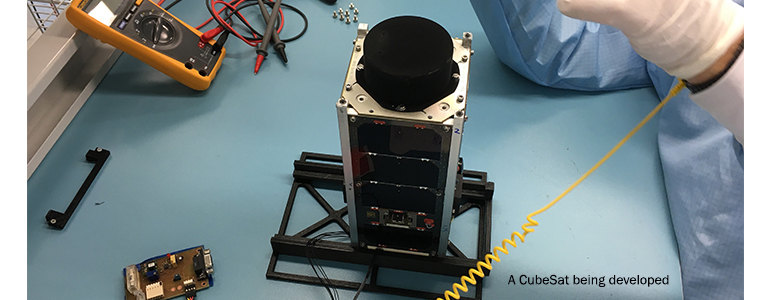“Nanosatellites are the future of space research.” So says Matthew Tetlow, president of Inovor Technologies in Adelaide, Australia.
Tetlow’s company designs small satellites, called nanosatellites or microsatellites, to help conduct space research. The “CubeSat” is one such satellite, made up of multiples of 10 x 10 x 10 cm cubic units.
Satellites this size are extremely valuable because, according to Tetlow, “With the miniaturization of electronics, it’s now possible to put the same amount of research equipment that’s on a full-sized satellite into something that’s about the size of a loaf of bread.” In other words, the CubeSat can do the same work that a large satellite does at far less expense.
For this reason, they have been much sought after by research institutes and other organizations that may not have the funding of large private sector companies.
One such research organization, the Von Karman Institute in Belgium, put out a call for micro-satellites. They planned to send 50 of them into the thermosphere to study how layers of the Earth’s atmosphere affect its climate. Tetlow, then a research fellow with the University of Adelaide, responded. He and his team used CORE, a model-based system engineering tool from Vitech, to help design the CubeSat.
“We built a model in CORE and through its use were able to keep track of the design and manage the changing requirements,” Tetlow said.
Because of their small size and low cost, CubeSats are readily adaptable. So it helped to be working in the agile yet robust model-based systems engineering environment that Vitech’s software provides. “They [the institute] changed the launch service provider three times and added extra requirements, but the CORE model allowed us to stay on track and up to date. It worked quite well.”
The project itself had a two-fold purpose: to encourage the growth of the small satellite industry, and to conduct scientific research. Tetlow’s CubeSat had two payloads on it. One was designed to measure the particle densities of hydrogen, oxygen, and nitrogen in the thermosphere—the layer of the Earth’s atmosphere that begins at around 50 miles above the Earth. This would help researchers understand the Earth’s climate and resilience in the face of climate change. The other payload was an atmospheric radio occultation experiment which used GPS measurements to work out how much water vapor there is in the atmosphere.
In using CORE to help design their CubeSat, Tetlow and his team established the requirements in the model itself, allocated the functions, and then assigned those functions to the satellite components. “We looked at traceability and at validation and verification,” said Tetlow. “The model supported the progression of a high-level design.”
Space research, of which CubeSats play a part, have brought humanity all kinds of benefits,
from advances in weather forecasting to implantable heart monitors and super lightweight materials, to water purification systems and the cameras found in today’s cell phones.
Tetlow sees his CubeSat work as part of the larger endeavor of space exploration in the 21st century. “It’s tremendously rewarding to be a part of something that has such potential to make a positive difference in the world.”






